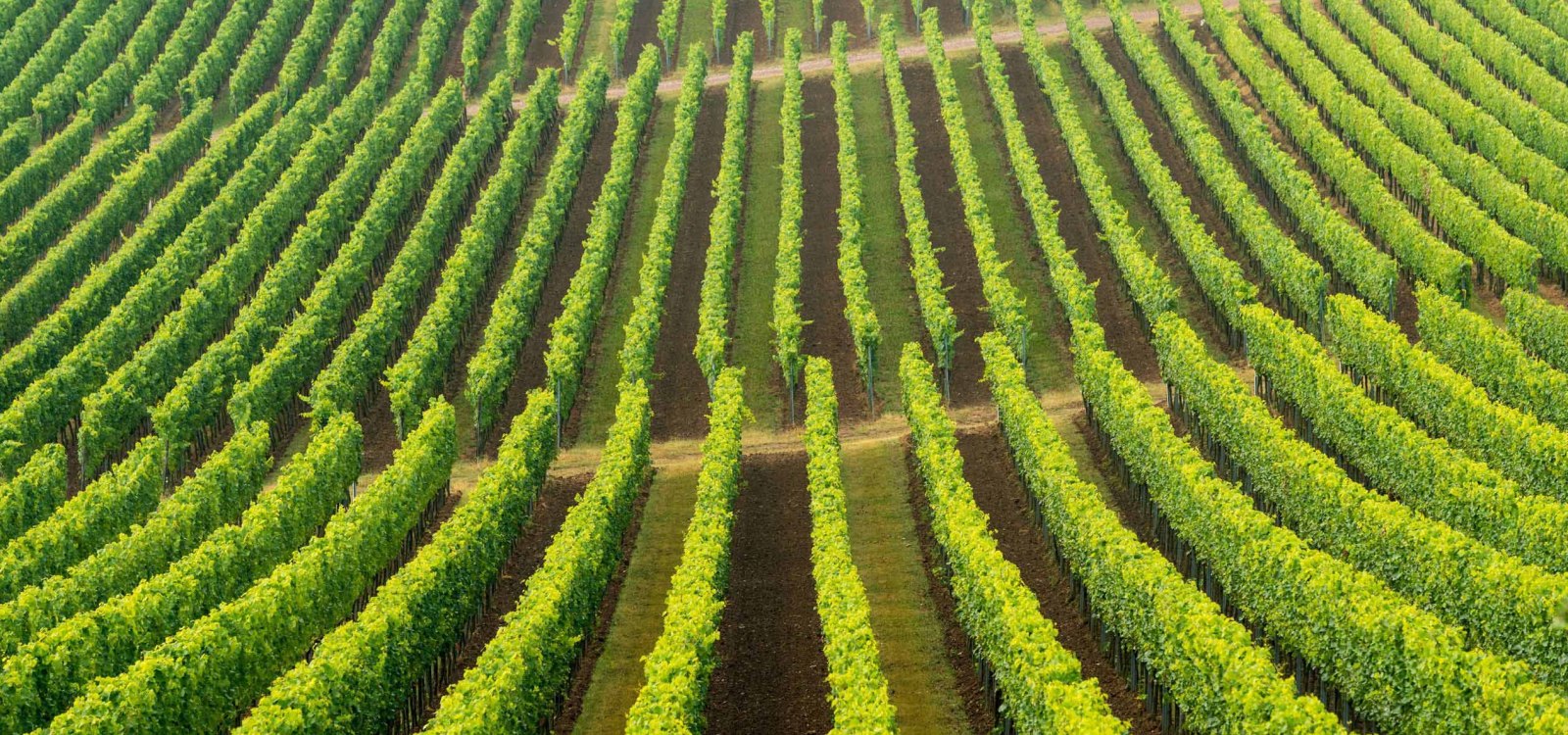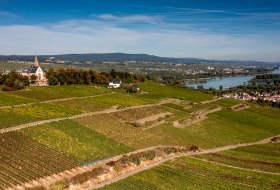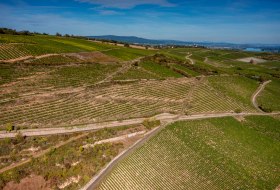
searchMenu



Quartzite lies between chapel and church The Rochuskapelle (Rochus Chapel) towers above, the Kempten district of Bingen on the banks of the Rhine below. In between the picturesque "Binger Kirchberg" vineyard, first mentioned in 1726. It probably got its name from the view of Kempten's Dreikönigskirche (holy trinity church). Mainly Riesling grows here, but there is also some Pinot Noir found. The loam-loess soil has a high stone content and is very rich in lime and quartzite. The quartzite contains iron oxide, colouring parts of the soil…

Red pigments in the soil for top Rieslings The people who gave the name to this single vineyard site chose something that takes some getting used to: in the case of the childhood disease scarlet fever, the tongue turns red. The single vineyard Scharlachberg consists of "Quarzit Rigosol", a strongly consolidated sandstone with a high iron oxide content. The iron discolours the soil orange-red or scarlet. The vineyard was first mentioned in a document in 1248 with the name "vocatur scarlachen". It extends above the Bingen district of…

The location was mentioned in 1532 with the name "beside Bodenstücke". The name can be traced back to a personal name (Bobo) or to the Middle German Boben (located above).

The name of the location is due to the nearby Rochuskapelle.

The name of the single location is based on the old national transport route.

The location was documented in the 12th century with the name "im Osterberg". To Middle High German means "Easter" located in the east and indicates the eastern location to the municipality Büdesheim.

In the position was an old landmark on which an open hand (Latin Palma = flat hand) was pictured and thus contributed to the naming.

The name of the old vineyard is based on the property of the parish.

The location was mentioned in the 17th century with the name "im Rosengarten". The rose gardens can point to a natural growth. Often, however, they point to early medieval burial places.

The name comes from the Middle High German word "rogues" and means carcasses. The term is thus based on an old Schinderacker.
Rheinhessenwein e.V.
Otto-Lilienthal-Straße 4
55232 Alzey
E-Mail: info@rheinhessenwein.deRheinhessenwein e.V.
Otto-Lilienthal-Straße 4
55232 Alzey
E-Mail: info@rheinhessenwein.de